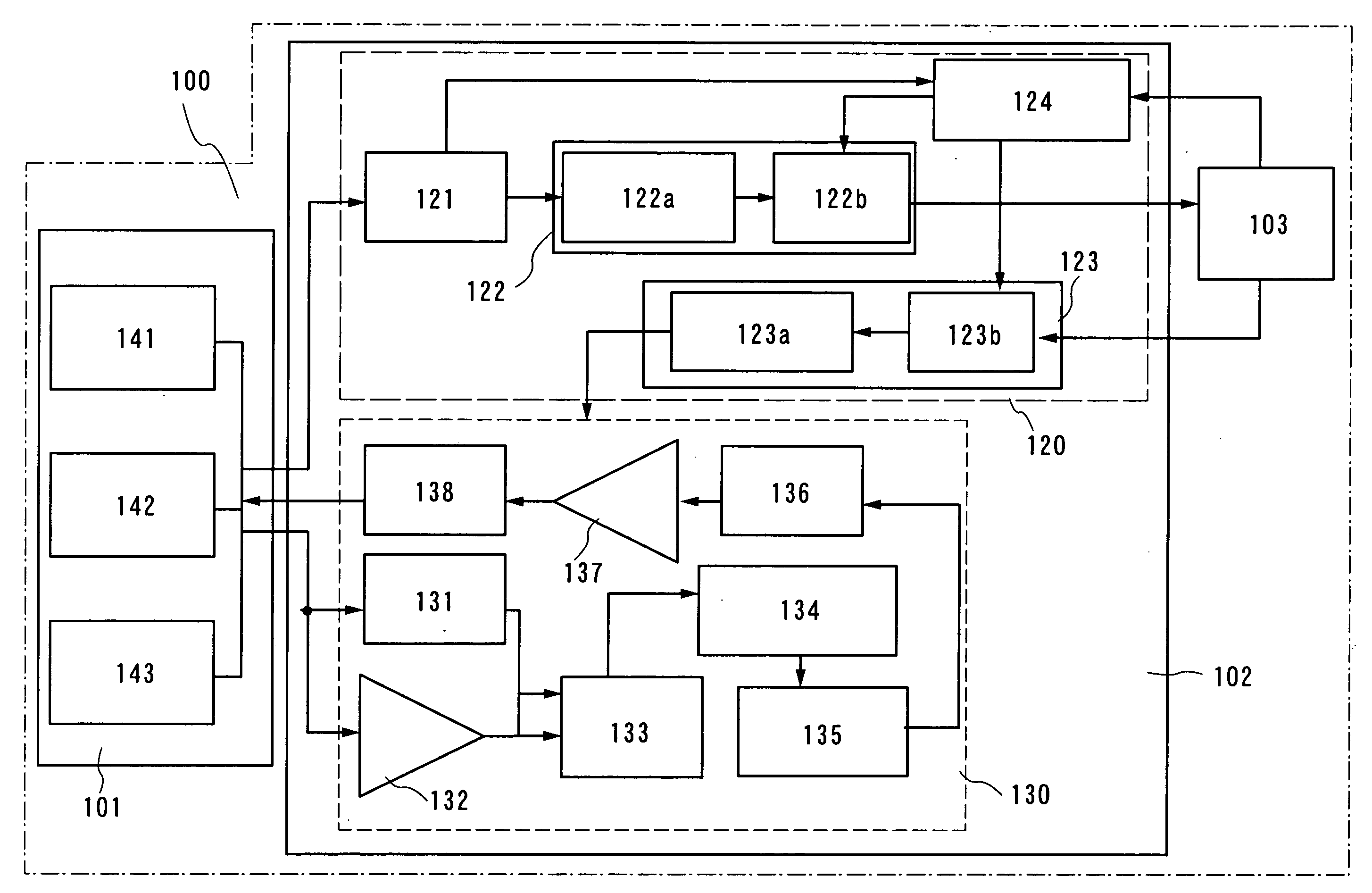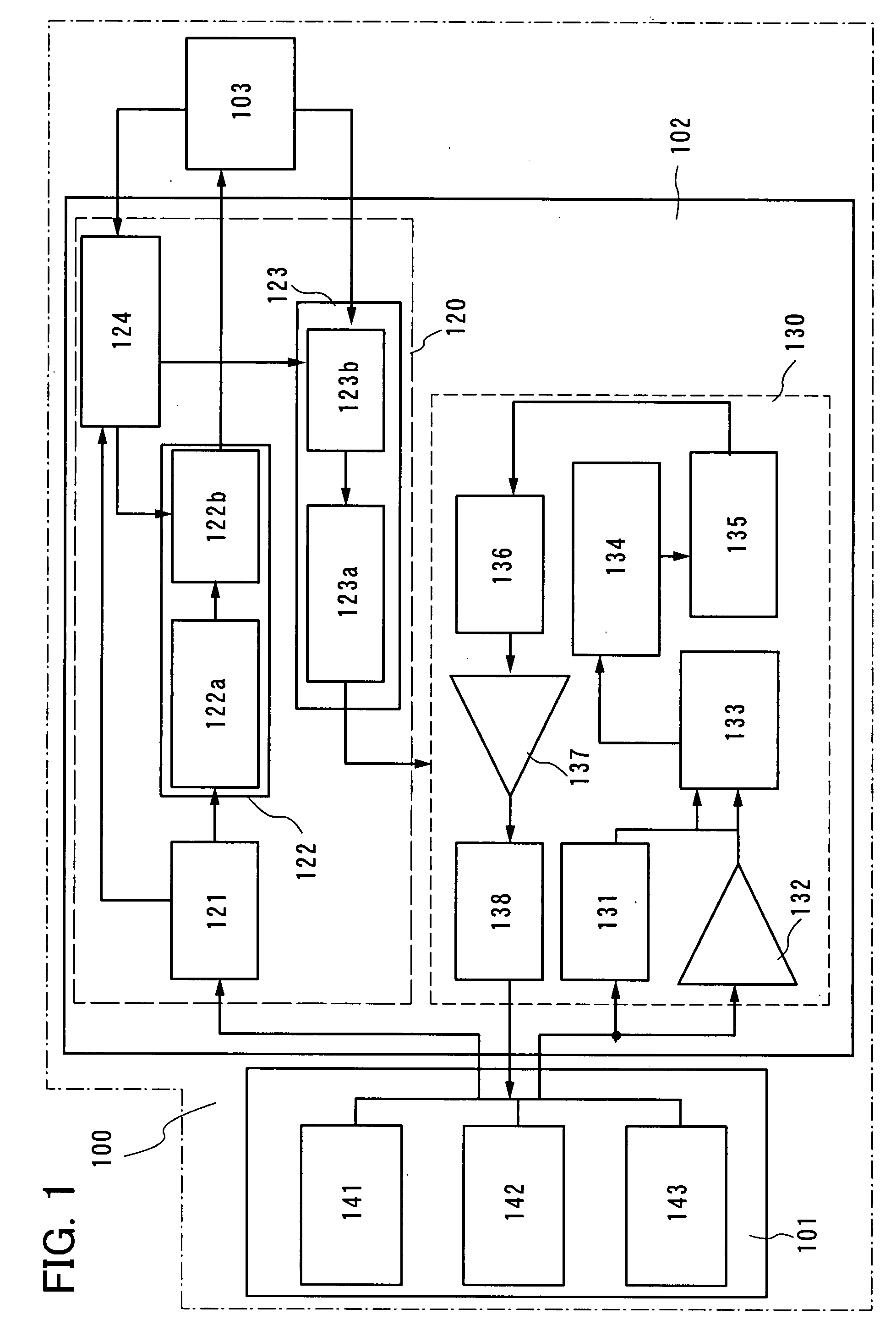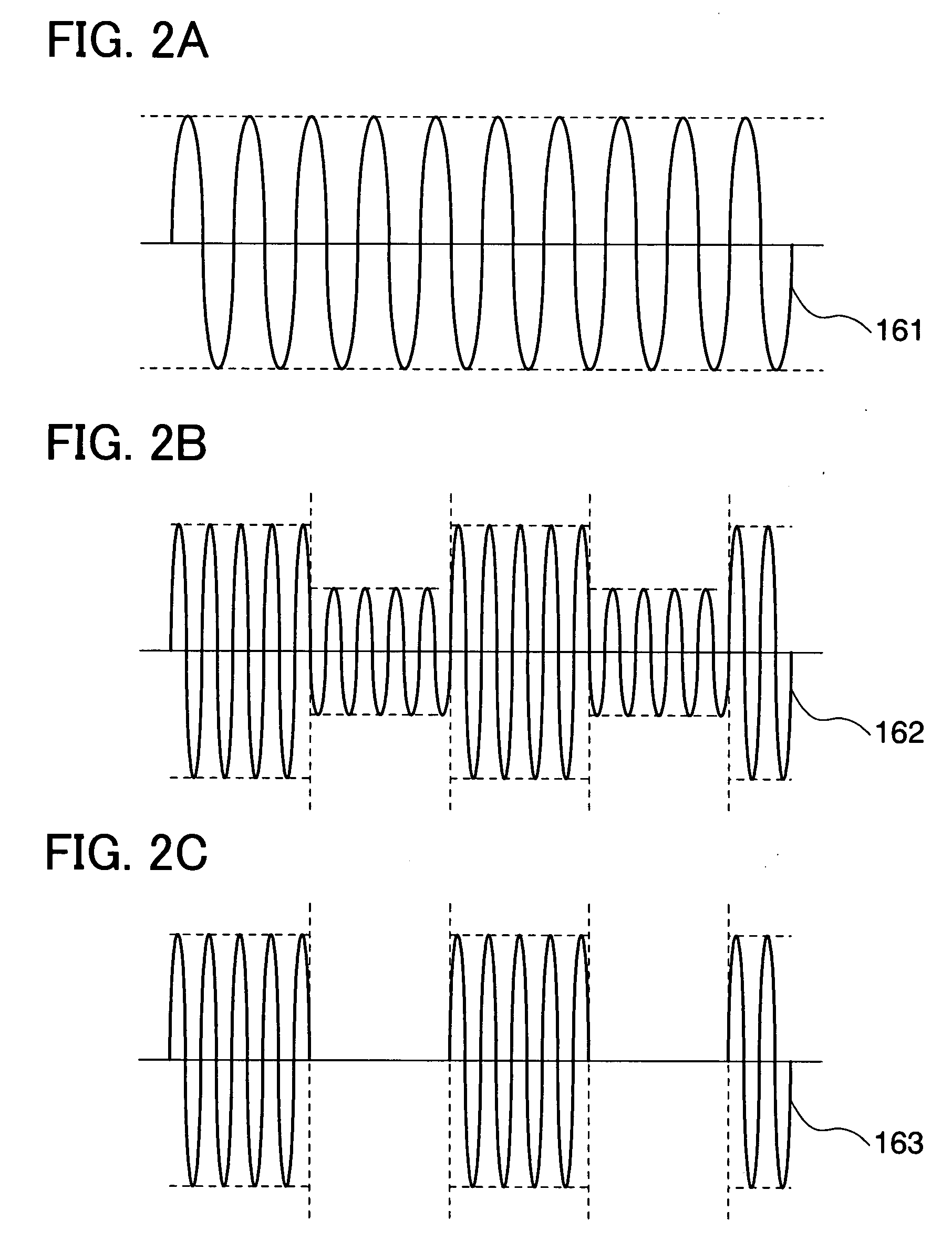Semiconductor device
a technology of semiconductors and devices, applied in the direction of electric controllers, instruments, ignition automatic control, etc., can solve the problems of deterioration over time of batteries and lack of electric power occurring with discharge, and the problem of ensuring the safety of users, etc., to achieve the effect of stabilizing communication, and reducing the risk of electrical failur
- Summary
- Abstract
- Description
- Claims
- Application Information
AI Technical Summary
Benefits of technology
Problems solved by technology
Method used
Image
Examples
embodiment mode 1
[0047]First, a structure of a semiconductor device related to Embodiment Mode 1 of the present invention will be described briefly. The semiconductor device includes an antenna circuit, a signal processing circuit for processing signals received by the antenna circuit, and a storage means for storing power produced by the signal processing circuit.
[0048]The antenna circuit is a circuit that receives and transmits signals. RFID of the present invention has a plurality of antenna portions, and each of the plurality of antenna portions receives signals at a frequency different from that of the others. In addition, an antenna terminal of the plurality of antenna portions is common. That is to say, in an antenna circuit, the plurality of antenna portions is connected to a signal processing section, which is to be described later, through a common antenna terminal.
[0049]The signal processing circuit includes a power section and a logic section. The power section generates a direct current...
embodiment mode 2
[0079]A transmission method for wireless communication signals depends on the frequency of the signals used for communication. For example, when the frequency is in the long wavelength region (for example, at a frequency band of 135 kHz or less) or in the shortwave band (for example, at the 13.56 MHz frequency band), the transmission method used is an electromagnetic coupling method or an electromagnetic induction method. On the other hand, when the frequency of the signals is in the UHF band (from 860 MHz to 930 MHz) or at the 2.45 GHz band, the transmission method used is a microwave method (also referred to as a radio wave method).
[0080]The shape of an antenna portion in an antenna circuit differs greatly depending on the transmission method used. For the electromagnetic coupling method or the electromagnetic induction method, because electromagnetic induction by variations in the magnetic field density is used, a conductor that functions as the antenna portion is a ring shape (f...
embodiment mode 3
[0098]In the present embodiment mode, as one feature of a semiconductor device of the present invention, an inlay that is used in an IC tag will be described. The inlay is an intermediate product for a final product of an IC tag or an IC card. The inlay is embedded in a plastic card, attached to a sticker label, or made into paper and used as an IC card, an ID label, or an IC tag.
[0099]FIG. 7, FIG. 8, FIG. 9, and FIG. 10 are perspective-view diagrams each illustrating an example of a structure of an inlay of the present embodiment mode. In each of FIG. 7, FIG. 8, FIG. 9, and FIG. 10, an example in which the structure of the antenna circuit 101 in FIG. 3 is used as an antenna circuit, but the antenna circuit shown in FIG. 4 or an antenna circuit with a different structure can be used. Hereinafter, structures of the inlays shown in FIG. 7, FIG. 8, FIG. 9, and FIG. 10 will be described.
[0100]FIG. 7 is an exploded-view perspective diagram of an inlay 400. A substrate 401 is a supporting...
PUM
 Login to View More
Login to View More Abstract
Description
Claims
Application Information
 Login to View More
Login to View More - R&D
- Intellectual Property
- Life Sciences
- Materials
- Tech Scout
- Unparalleled Data Quality
- Higher Quality Content
- 60% Fewer Hallucinations
Browse by: Latest US Patents, China's latest patents, Technical Efficacy Thesaurus, Application Domain, Technology Topic, Popular Technical Reports.
© 2025 PatSnap. All rights reserved.Legal|Privacy policy|Modern Slavery Act Transparency Statement|Sitemap|About US| Contact US: help@patsnap.com



